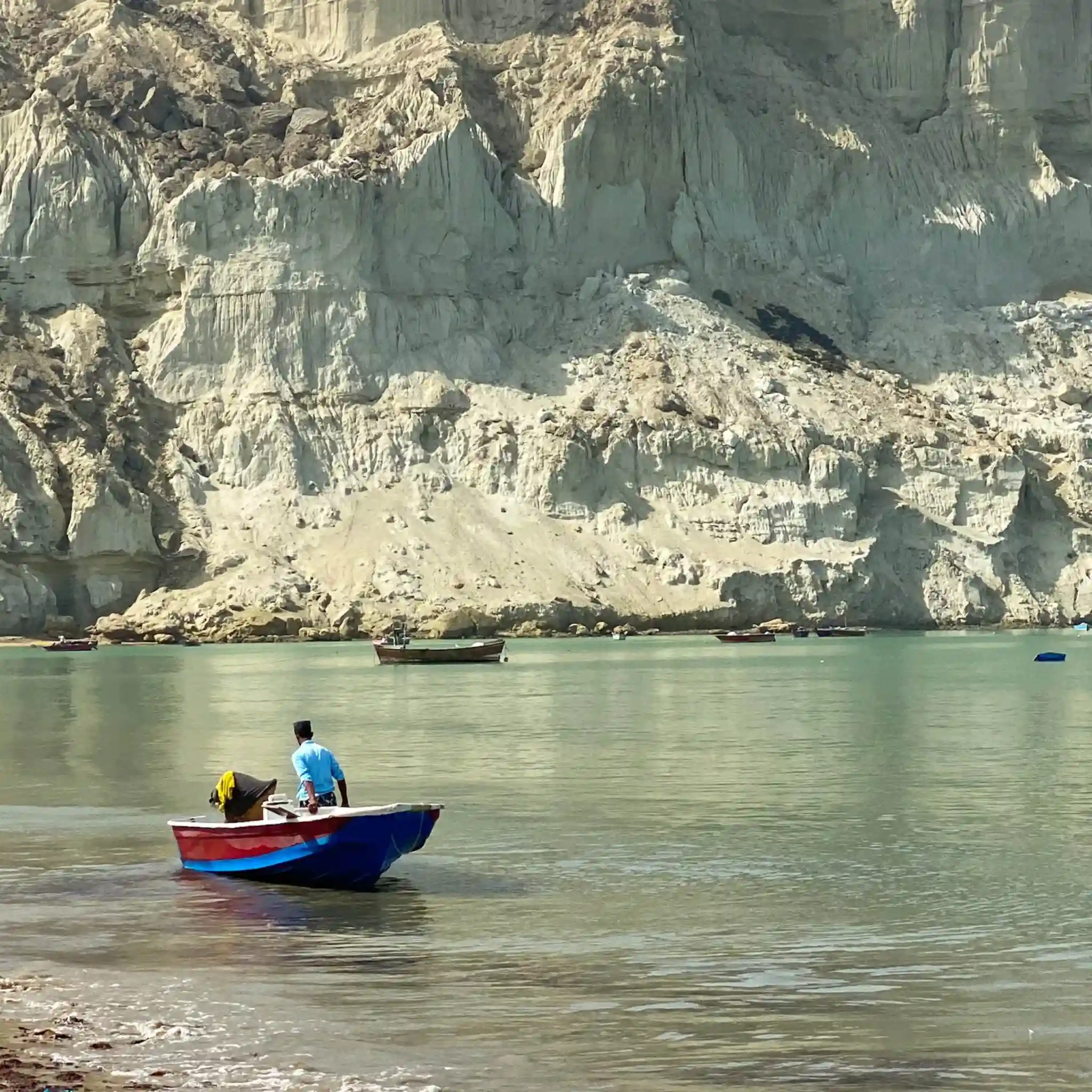Gwadar is affectionately referred to as “Ganjen” by the locals; it roughly translates to ‘a place of abundant natural beauty.’ It isn’t hard to see why it gets that moniker: the minute you land into the town, you immediately get a glimpse of the jagged Koh-i-Mehdi dramatically rising above the airstrip. Built on a hammerhead, the northern fringe of the city is dominated by the Koh i Batil, a massive, flat, table-topped mountain.

The city itself is built on a narrow strip of land that is flanked on both its eastern and western edges by coastline, locally referred to as Demi Zirr and Paddi Zirr, respectively. Ambling along the azure shores are a series of colorful fishing vessels; it would not be unfair to say that the city is built on the backs of its fishermen. Fish is a very important staple of the local diet, and fish biryani is a Friday favorite to bookend the work week.
To say that Gwadar’s location is strategically important would be a gross understatement. However, that status also gives the area a particularly complex history. From 1783 – 1958, Gwadar was an overseas possession of the Sultanate of Oman. Through negotiations led by Pakistan’s Prime Minister Feroz Khan Noon and his wife Viqar Ul Nissa with the Sultan of Oman, Gwadar was finally handed over to Pakistan for a sum of Rs 5.5 billion, which was mostly paid by the Aga Khan IV.

The legacy of Oman’s rule over Gwadar is evident throughout the city, from the smell of frankincense to the intricately lit up bukhoor pods in every little establishment across town, to the innumerable shops selling Omani style halwa, a bite or two of which will immediately whisk you away to the souks of Muscat and Nizwa. Every second third person in town wears the Omani style heavily embroidered cap, the Kummah, and locals’ surnames often interchange between ‘Balochi’ and ‘Balooshi’ where the letter چ gets replaced with ش, as if for native Arabic speakers.
A collection of decaying fortifications built from the days of Omani rule over the city lead up to the end of the city’s main market, the Shahi Bazaar.
While in Gwadar, I was often caught off guard by the Omani influence; it frequently felt as if I was gallivanting across a rural corner of the Gulf instead of traveling within Pakistan.
However, Oman isn’t the only country that has had an influence on the sociopolitical structure of Gwadar.
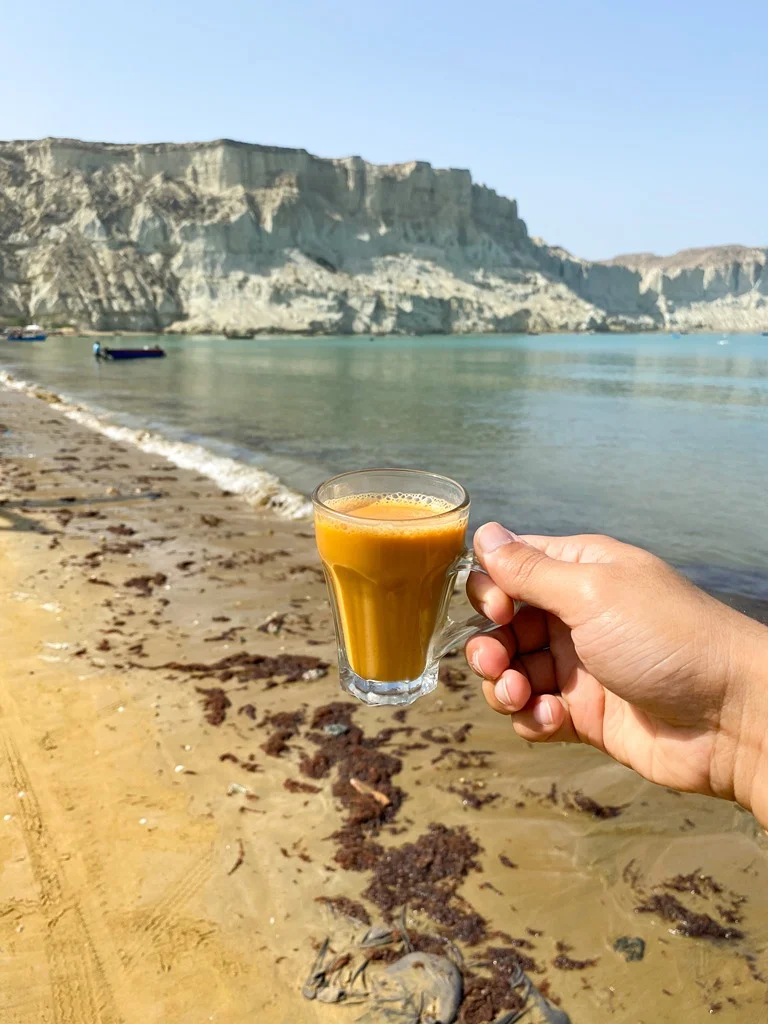
From the vantage point of Gwadar, Iran begins barely a hundred kilometers away. Many people have family on the other side of the border, and a large segment of the local population is fluent in both Persian and Balochi. Petrol, electricity and the snacks sold at the corner shops are all Iranian, many times cheaper and much more easily available than the Pakistani fare.
From baklava flavored ice cream sandwiches to the popular yogurt based beverage called doogh, to pistachio flavored cakes and Iranian cream cheeses. Iran’s cultural exports to Gwadar line the grocery store shelves of the city. And because of global economic sanctions in Iran, many well-known foreign food items like Oreos and Cheetos are marketed under similar copycat names, often using the same, familiar color scheme or mascot.
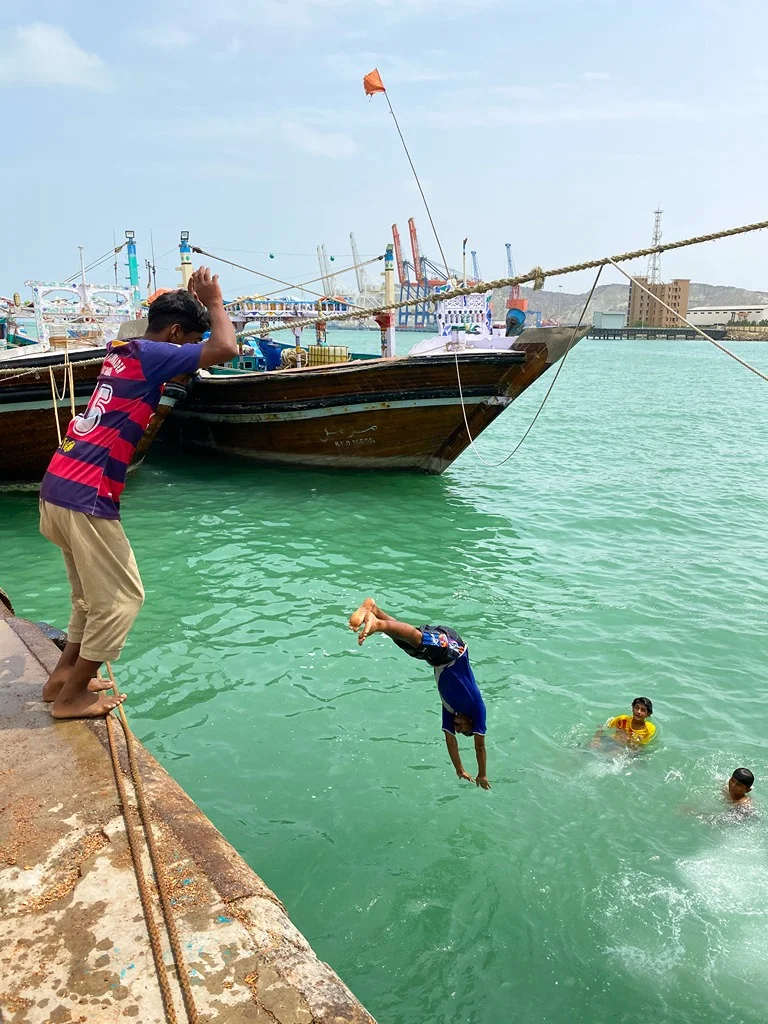
Gwadar is where Arab and Persian culture collide with one another in a oddly harmonious symphony, and create a distinctive identity. To be Gwadari, then, is to simultaneously be Arab, Iranian, Balochi, and Pakistani.
And to top it all off, there’s a new foreign arrival in town. Since the Gwadar port is being developed as part of the China-Pakistan economic corridor, popularly known as CPEC, the Chinese influence in Gwadar is palpable almost everywhere, and especially evidenced by the mega infrastructure projects mushrooming across town.

I ended my little sojourn to Gwadar at the city’s jetty. Each Sunday the place comes alive with youthful energy. For the rest of the week, it’s a bustling hub for the city’s fishermen but on Sunday, it turns into a diving arena for the city’s youth.
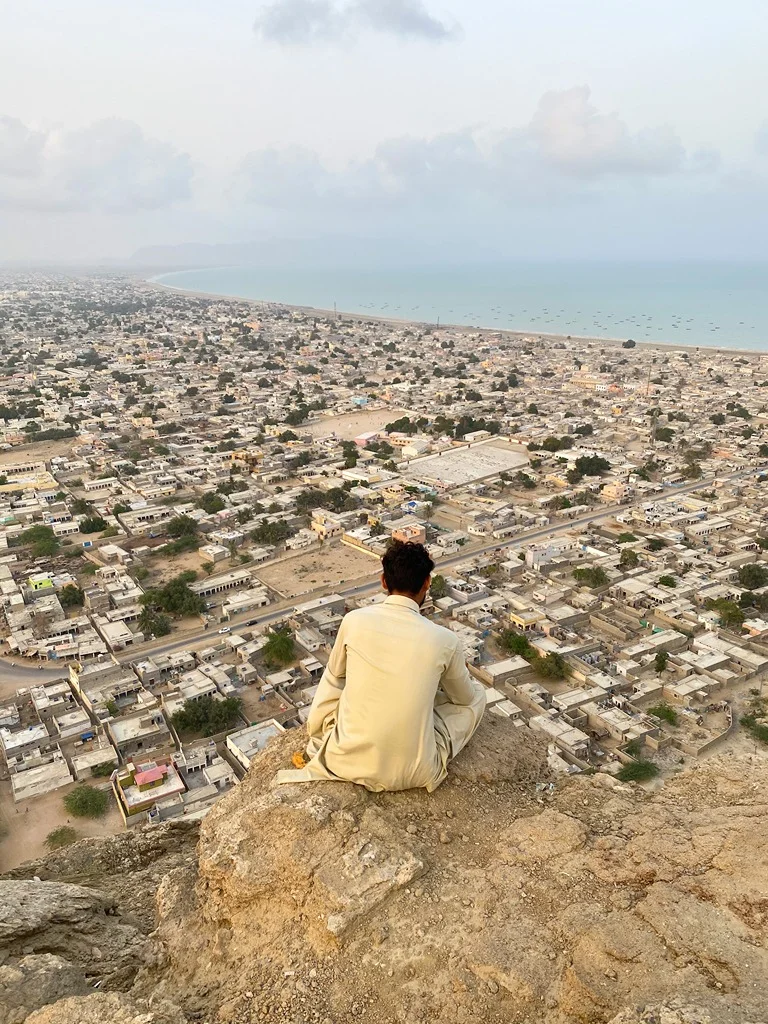
Armed with GoPros and smartphones, the divers film one another, each trying to top and outsmart the other. The aim is to come up with the most outlandish and viral-worthy dive. Somersaults, backflips, cannonballs, starfish-jumps: everything and anything is on the diving menu on Sunday.
The jetty overlooks the multibillion dollar port being developed in collaboration with the Chinese. It is quite the spectacular setting - a front row seat to the very future of the city.
Welcome to Gwadar, Pakistan’s boom town on the shore. A quiet fishing village that’s morphing into a metropolis almost overnight.
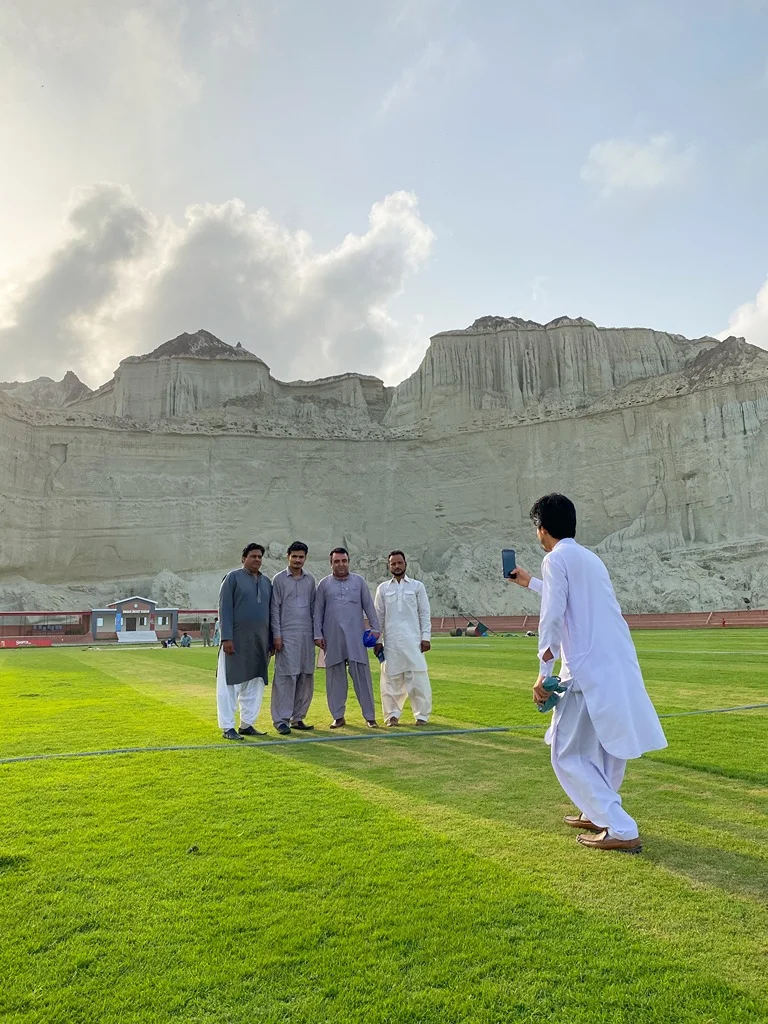
M. Bilal Hassan is a doctor by profession who loves traveling to obscure and off the beaten track locations around the world in his spare time. He enjoys writing about art, travel and geopolitics. He currently resides in Karachi – Pakistan


